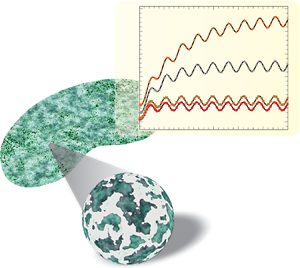Published online by Cambridge University Press: 02 August 2021

This work reports on modelling unsteady gas flow in porous media at the macroscopic scale in the slip regime, a topic of interest in a wide range of applications. The slip effect is modelled by means of a Navier-type boundary condition. A macroscopic model is derived from the initial-boundary-value problem governing unsteady, single-phase flow of a Newtonian fluid through homogeneous porous media in the creeping, isothermal and slightly compressible slip regime. For momentum transport, the macroscopic model involves two terms. The first consists of a convolution product between the macroscopic pressure gradient and the temporal derivative of an apparent dynamic permeability tensor; the second accounts for the memory of the initial condition. Both contributions are predicted from the solution of a unique closure problem that is independent of the initial flow configuration and of the macroscopic pressure gradient. The accuracy of the model is assessed by comparisons with direct numerical simulations performed at the pore-scale, which find excellent agreement. The simulations also show that a classical heuristic model, which is the consequence of assuming a separation of time scales between the pore-scale and the macroscale, is inadequate, in general, to correctly predict the macroscopic velocity. Results from this work provide a formal clear insight about unsteady flow in porous media in the slip regime, motivating further theoretical and experimental work.